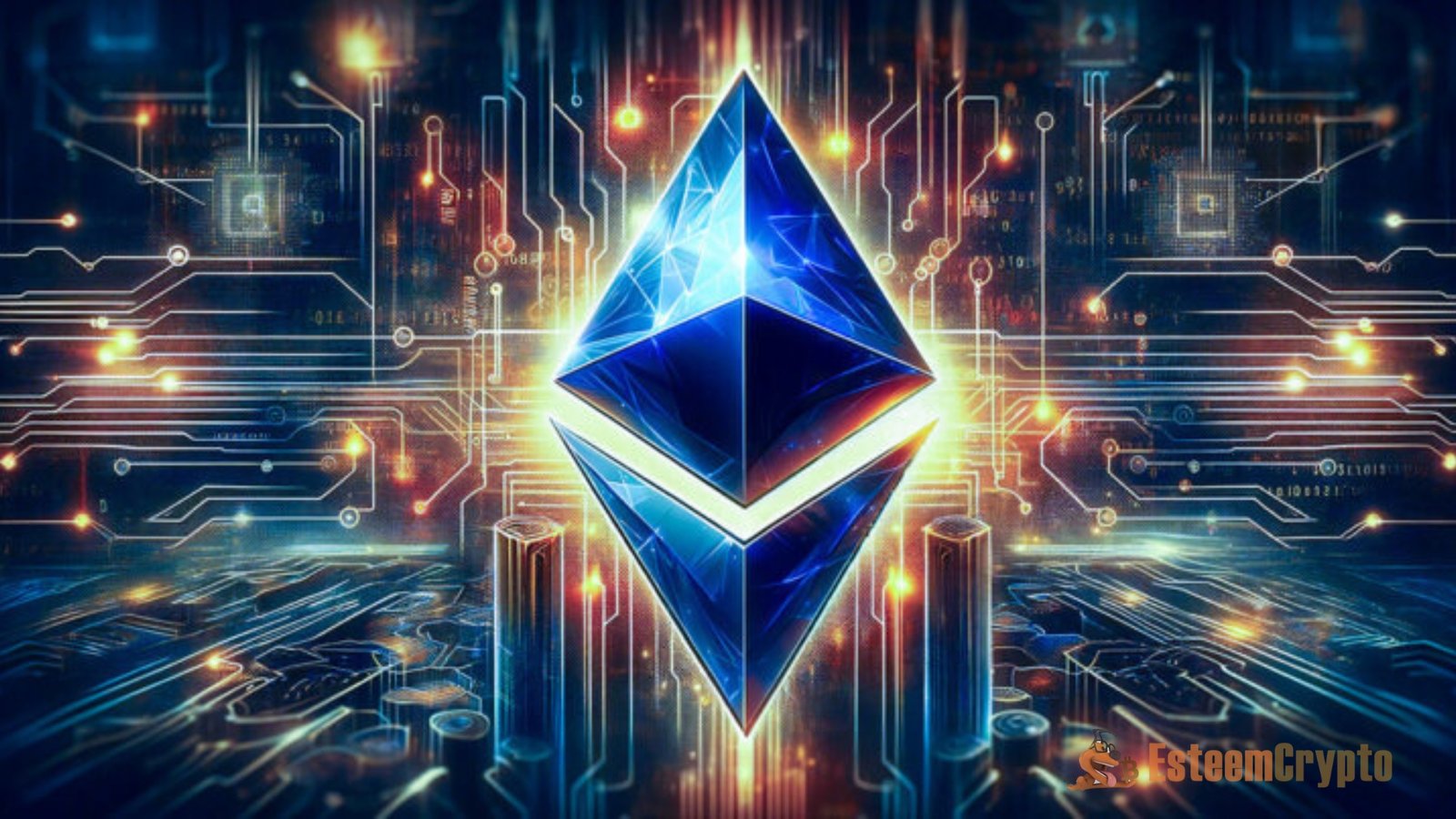The Ethereum Blockchain Explorer is a powerful tool designed to help users navigate the expansive world of Ethereum. As we dive into the ecosystem of ETH, this article will highlight how blockchain explorers function, their importance, and how to effectively use them to track transactions, blocks, and other activities taking place on the Ethereum blockchain in 2024.
Understanding the Ethereum Blockchain
Ethereum is a platform for developing and deploying decentralized apps (dApps) and smart contracts. It is open-source and decentralized. In contrast to more conventional digital currencies, Ethereum (ETH) is used to power transactions on the Ethereum network and purchase digital goods and services. Tokens like ERC20 enable users to experiment with new ideas and discover new uses for digital assets in financial and non-financial sectors.
How the Ethereum Blockchain Works
Smart contracts may be executed across a distributed network on the Ethereum blockchain thanks to its unique consensus mechanism, the Ethereum Virtual Machine (EVM). Miners are compensated for their labor securing the network and confirming transactions on the Ethereum blockchain with gas, a required charge for each transaction. This complex procedure guarantees the continued efficiency and robustness of the Ethereum blockchain.
Importance of Blockchain Explorers
Essential services that let users search and study transaction data, follow the latest blocks, and view Ethereum stats are blockchain explorers. Thanks to these tools, users can keep tabs on what’s happening on the Ethereum network, which makes the ecosystem more open and transparent. They help keep tabs on different kinds of on-chain interactions and give light on token prices as well.
Using the Ethereum Blockchain Explorer
How to Navigate the Ethereum Explorer
The Ethereum blockchain explorer is designed to be user-friendly, so searching for certain addresses, blocks, or transactions is a breeze. Common characteristics of such an interface include the ability to view the current network status, blocks, and transactions in real time. Your capacity to monitor and assess Ethereum’s operations will greatly improve if you learn how to use this tool.
Accessing Transaction Data
Accessing transaction data with the Ethereum blockchain explorer has never been easier. Users can enter an ETH address or transaction hash to access comprehensive details regarding previous transactions. Ensuring the accuracy of transactions on the Ethereum network, keeping tabs on gas fees, and checking the status of token transfers depend on this transparency.
Finding Block Information
An essential part of the Ethereum blockchain explorer’s job is to find block information. The most recent blocks mined, timestamps, transaction counts, and block heights for each are viewable to users. The present status of the network, the timing of block confirmations, and the general efficiency of the Ethereum blockchain can all be better understood with this data.
Latest Transactions on the Ethereum Network
Overview of Recent Transactions
The recent Ethereum network transactions show how active the Ethereum blockchain ecosystem is. You can see a complete record of all your Ethereum (ETH), token (TOK) trades, and smart contract interactions on the blockchain. To better comprehend the inner workings of the Ethereum network, users can peruse and look for recent transactions to learn about gas costs, transaction volume, and other important trends.
How to Track the Latest Transactions
Several blockchain explorers make it simple to keep tabs on the most recent transactions on the Ethereum network. Users can access comprehensive transaction histories by searching for particular ETH addresses or hashes using these tools. Blockchain explorers offer application programming interfaces (APIs) that users can utilize to get real-time data. This improves their capacity to monitor Ethereum blockchain operations, such as transactions, and keeps them informed about new developments.
Understanding Transaction Fees and Gas
Gas, the currency for Ethereum transactions, is fundamental to the network. Gas fees are collected to reward miners for the computational work needed to validate transactions and execute smart contracts. Users must have a clear understanding of how gas costs are affected by network demand, as it has a direct impact on the cost of transactions. A user’s transaction strategy and fee savings while browsing the Ethereum blockchain can be optimized by watching gas prices.
Exploring Ethereum Blocks
In Addition, The foundation of the Ethereum blockchain is the Ethereum block, which contains groups of confirmed transactions. A secure chain is formed by connecting each block to the one before it, guaranteeing the network’s integrity. Users may confidently explore the Ethereum blockchain by viewing blocks, allowing them to observe the number of transactions, block timestamps, and the network’s overall health.
Viewing Latest Blocks
The most up-to-date information about the Ethereum network can be found by viewing the recently mined blocks. Blockchain explorers allow users to view transaction counts, miner characteristics, block height, and more in real time. Essential for anyone involved in the ecosystem, this data enables users to monitor the stability of the Ethereum network and the frequency of block formation.
Significance of Block Data
In Addition, It is impossible to exaggerate the importance of block data on the Ethereum blockchain. Information such as transaction throughput and average confirmation times are included in each block, which provides crucial insight into the network’s operating efficiency. The Ethereum blockchain allows users to make informed decisions by studying block data, which reveals trends that impact ETH pricing and token performance.
Ethereum Address Tracker
How to Track an Ethereum Address
An integral part of the Ethereum blockchain explorer is the ability to track an address, which lets users keep tabs on transactions and activity linked to that address. Users can examine all transactions associated with an ETH address, see token transfers, and examine balance fluctuations over time by entering that address into the tracker. In Addition, Users may keep up with the newest happenings on the Ethereum network with the help of this handy application.
Understanding Address Balances and Transactions
On the Ethereum network, an address’s balance shows the sum of all tokens and Ethereum the address has. In Addition, Users can see how balances change with each incoming and outgoing transaction by viewing transaction histories in the Ethereum Explorer. Users may optimize their presence in the Ethereum ecosystem and make informed decisions regarding their assets by understanding these dynamics.
Security Considerations for Address Tracking
Ethereum address tracking does provide useful insights, but users still need to be careful about security. There are hazards, such as phishing attempts or unwelcome attention, that you run when you make your Ethereum address public. When investigating and searching for transactions on the Ethereum blockchain. In Addition,It is vital to use trustworthy blockchain explorers and to consider privacy precautions to secure your funds.
Future of Ethereum and Blockchain Explorers in 2024
Predicted Trends for Ethereum
As time goes on and technology improves, Ethereum’s future is bright. Experts expect increases in layer-2 scaling solutions and decentralized finance (DeFi) apps to improve transaction speeds and decrease gas fees. In Addition, Efficient blockchain explorers will be in high demand as the Ethereum ecosystem grows. Enabling users to keep up with advancements and interact with the network more effectively.
Enhancements in Blockchain Explorer Technology
Users can anticipate an improved experience and easier data accessibility in 2024 thanks to advancements in blockchain explorer technology. Accessing and searching for transactions will be a breeze with features like comprehensive APIs, real-time notifications, and advanced analytics. Insights into market patterns and token performance can be gained through these advancements. Allowing users to track their activity on the Ethereum blockchain better.
Further Read: Ethereum Node: A Comprehensive Guide for 2024
Impact on Token Development and Usage
New features and improvements in blockchain explorers and Ethereum will majorly affect token creation and use. Strong tools for monitoring token performance and investment management will be necessary. When the number of ERC20 tokens developers create increases. More widespread use of tokens across industries and an improvement to the Ethereum ecosystem will result from better tracking systems. That make it easier to keep tabs on token values and transactions.













